From the basketball court to the insurance arena

Why people don’t like taking advice
How to develop the teenage KiwiSaver


Why people don’t like taking advice
How to develop the teenage KiwiSaver
It’s the gratitude time of year. And before I sign off to enjoy a couple of weeks with my partner visiting friends and family across Nelson, Wellington and the Bay of Islands, I wanted to share a thanks.
Firstly, to the hard-working and mission-driven Kernel team. In three short years we’ve grown from our founding team of three to a fully fledged family of 33, now managing hundreds of millions of dollars on behalf of 10’s of thousands of Kiwis.
And of course, a significant thanks to the dedicated and hardworking advice community. Independent advice plays a critical role in delivering better financial outcomes. We are proud to play our part in supporting you in your day-to-day practice by listening, developing smarter and more efficient investment options, and investing in the community through education with our CFP Masterclass sponsorship at Financial Advice New Zealand Conference and our regular support of SIFA.
It has been a challenging year for the sector, both from a markets perspective and the significant regulatory changes, however, the advice community has risen to the challenge.
Now is the time to take a moment and recognize the efforts of 2022, to enjoy time with your own friends and family, and to look ahead with great optimism for what 2023 holds. Thank you to all of you, Dean Anderson, Founder and CEO of Kernel
With Kiwisaver assets now totalling more than $83 billion, the savings scheme provides advisers with a big opportunity to diversify their revenue streams.


UP
Goodbye to a challenging year.
NZX's surprise funds management move; Getting a locum could be a problem; FNZ buys into Paua Wealth.
PEOPLE
appointments at Generate, the MDRT, Mint, and the FSC; and a colleague honours the late David Wilson
This issue of ASSET is our KiwiSaver Special.
KiwiSaver has become the backbone of New Zealand’s retirement income, or saving system.
But it is one of those odd things which has divided financial advisers.
At one end, advisers have embraced it, and see Kiwisaver as a key part of their businesses, while at the other end there are those who don’t want a bar of it.
I find this odd - because if I were a financial adviser, KiwiSaver would be a key part of my offering.
Indeed, I have been known to say that if I were to retire from my current gig, I’d consider setting up a KiwiSaver advice business!
KiwiSaver is interesting, as in its 15 years it gone through a number of cycles.
One cycle underway currently is the development of adviser-centric funds.
Sure, there have been a number of managers who have been strong in the adviser space for years, including Booster, Generate, ANZ and NZ Funds.
Now we are seeing the likes of Consilum, with its adviser-only funds; Aurora setting up a KiwiSaver fund; InvestNow developing a scheme that advisers are using; Koura having a digital and adviser offering; and Kernel entering the market.
There are options in the marketplace for advisers to deliver good, tailored funds to their clients.
Of course, the cloud hanging over many advisers is the Financial Markets Authority and its dislike for the way advisers are remunerated with KiwiSaver. You can read more about this in our lead feature.
What gets lost in the regulator’s argument is that advisers deliver true value to clients by ensuring they are in appropriate funds.
As we barrel towards the end of the it is a time to reflect on the past 12 months.
For me, one of the biggest observations has been the changing shape of the financial advice sector.
Over the past 25-plus years, I have built up friendships and acquaintances with hundreds of advisers.
Now many of these people have decided it is time to hang up their shingle and enjoy a well-earned retirement.
Obviously, the big driver for this is the changing financial adviser regulations.
When you get this issue of ASSET, we will be fewer than 100 days from the start of the new regime.
What will financial advice look like in one, two, or three years time?
I don’t know the answer, except that it will look different.
One of the interesting observations – whether it constitutes a trend yet is debatable - is the vertical integration starting to emerge.
Global administration business FNZ has bought a stake in Paua Wealth; Mint Asset Management has created Amplifi and has already acquired one financial planning firm.
And while it has hasn’t been announced, Consilium has bought into the Auckland-based planning business, The Private Office, founded by Laetitia Petersen.
I would like to thank all those businesses who have supported ASSET this year.
From all the team at Tarawera Publishing, we wish you a safe and happy Christmas.
Publisher
Head office and advertising
1448A Hinemoa Street, Rotorua
PO Box 2011, Rotorua
P: 07 349 1920
F: 07 349 1926
E: philip@tarawera.co.nz
Publisher
Philip Macalister Publishing co-ordinator

Jing Tao
Design Samantha Garnier
Contributors
Dawn Pickens, Russell Hutchinson, Jenni McManus, David Van Schaardenburg
Subscriptions
Jing Tao
P: 07 349 1920
E: subscriptions@tarawera.co.nz
Moved offices?
Make sure you don't miss an issue by changing your address.
Go to tarawera.co.nz/coa
The NZX took many in the industry by surprise after announcing plans to acquire QuayStreet Asset Management, and more acquisitions can be expected.
The surprise to many was that a passive manager was buying an active manager.
Smartshares says there will be “no immediate change for QuayStreet clients.”
It says the QuayStreet funds will be offered as “a premium product set, complementing Smartshares' existing systematic and passively managed product offering.”
NZX chief executive Mark Peterson says the acquisition of QuayStreet provides an attractive opportunity for NZX to acquire a high-growth fund –
aligned with a powerful private wealth network, driving further scale for Smartshares.

“Smartshares is a proven funds management business which offers funds to investors that track the performance of an index or use a systematic approach to investing,” Peterson says

In addition to the deal, NZX has entered into a product support and distribution agreement with Craigs under which NZX and Craigs will work together to develop new products for the benefit of Craigs and QuayStreet customers. In time, NZX also expects to realise further synergies across the Smartshares business as a result of this transaction.
The transaction will see Craigs transition the management of the QuayStreet funds to Smartshares. It is expected to occur in late February 2023 with support services to be transitioned over the subsequent twoyear period. NZX intends to retain the majority of QuayStreet staff as part of the transaction to continue to support QuayStreet and its clients.
Under the deal Craigs Investment Partners is incentivised to continue to direct funds under management to QuayStreet for an additional three years following the acquisition, with an earnout clause capped at $19 million. It says this would equate to another $1.2 billion of funds under management.
www.pathfinder.kiwi
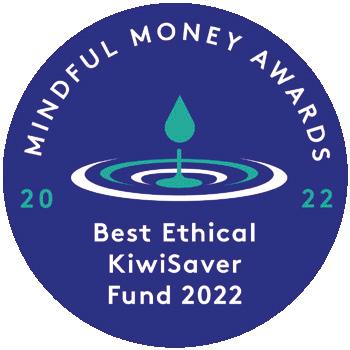


Performance figures as of 30/09/22 (after fees before tax). Data taken from Morningstar’s KiwiSaver Survey September Quarter 2022. Past performance is no guarantee of future returns. We encourage all investors to seek independent financial advice prior to making investment decisions. Morningstar provide research and recommendations for the financial sector and are considered by financial journalists as influential in the asset management industry.
© 2022 Morningstar, Inc. All rights reserved. Neither Morningstar, its affiliates, nor the content providers guarantee the data or content contained herein to be accurate, complete or timely nor will they have any liability for its use or distribution. Any general advice or ‘regulated financial advice’ under New Zealand law has been prepared by Morningstar Australasia Pty Ltd (ABN: 95 090 665 544, AFSL: 240892) and/or Morningstar Research Ltd, subsidiaries of Morningstar, Inc. without reference to your objectives, financial situation or needs. Up to date benchmark performance comparisons for each fund are available on our website. Pathfinder Asset Management Limited is the issuer of the Pathfinder KiwiSaver Plan. A Product Disclosure Statement for the offer is available at pathfinder.kiwi


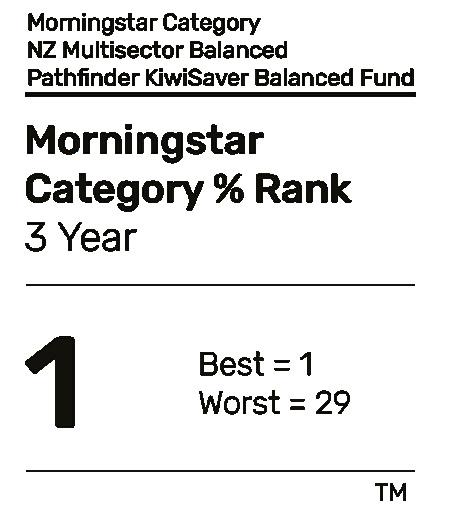
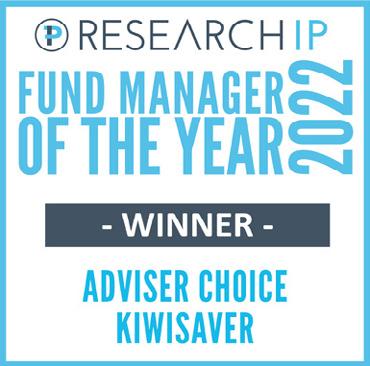
Independent wealth advisory firm Pāua Wealth Management has secured FNZ as a minority shareholder and partner.

The move is part of a continued journey for Pāua Wealth Management and with FNZ onboard it means there is support in helping grow the company’s future ambitions.
FNZ is a global company with more than 30 locations worldwide including Europe, North America and Asia Pacific and still has significant operations in New Zealand with offices in Wellington and Auckland.
With FNZ also a growth focused company and on a mission to “open up wealth” in a bid to make personal wealth more transparent and sustainable, their commitments to transparency and independence align with Pāua Wealth Management and only serves to strengthen the focus on achieving long term outcomes for clients.
Pāua chief executive and co-founder Donna Nicolof says FNZ are a real success story with a significant global footprint who continue to invest in their platform and growth.


“Pāua will benefit from access to capital to not only attract the best people, but support acquisition opportunities and expand our global network.”
“This is an exciting time in our journey, given the number of people seeking independent financial advice as they sell businesses or transition to the next generation.” With the new strategic partnership, FNZ’s investment will not change Pāua’s employee controlled independent model, and Pāua remains unwavering in their commitment to deliver independent financial advice.





He says the first challenge is finding an adviser you can trust who can assist if you're incapacitated, or away for a holiday. Which on paper is probably the more straightforward thing to arrange.
The second aspect is having that adviser actually step into your business and sit in your seat. It's not as easy as everyone thinks, he says.
Getting a locum access to email, usernames and passwords for providers and operating on that basis is just a technical process.
The more interesting piece is how the
























































locum operates as the adviser and does not end up as a ghostwriter- something the industry wants to try and avoid.
For a locum to be able to advise a FAP's clients, they need to be added to the FAP because they aren't the locum’s clients. A Class 1 licensed adviser will need to be removed and the locum added.





A further complication is that the adviser needs to be reconnected to a FAP in a specific timeframe or get deregistered.
The next bit is documentation; you have many document templates in






When choosing a KiwiSaver provider, you want to trust the people managing your clients’ hard-earned savings are as invested as you are.
Our award-winning team invest their own money right alongside our clients, so you can take comfort knowing we’re all on the journey together.
Talk to our team today about our specialist solutions for Financial Advisers.





















your business with your name on them, all of which need to be updated or duplicated and updated for your locum.























A thorny issue is the locum’s relationship with providers.


The present approach with providers means there can be significant issues in setting up locum arrangements for agencies.





Because the locum is not the adviser, they have to be independently verified. If the locum was able to access clients without an agency authorisation in place then there is either a security problem, or a ghostwriting one. A





























Nathan Field will be joining Generate KiwiSaver as a global equities portfolio manager from March next year.

For more than a decade, Field has been responsible for the security selection and portfolio construction of the Global Thematic Fund at Kiwi Wealth.
Generate lead portfolio manager and executive director Sam Goldwater said Field was one of the very top global equities portfolio managers based in New Zealand.
“In his time at KiwiWealth, Nathan has fashioned an enviable track record investing in global equities.”

Generate will offer both a wholesale and retail fund managed by Field, so that he can continue his thematic style of global equities investment.
Generate has more than $3.5 billion funds under management, and a track record of strong long-term performance through responsible investment.
Mint Asset Management has appointed Rachel Tinkler as head of responsible investment.
Tinkler will drive responsible practices and lead the company in its corporate responsibility initiatives.
She will be responsible for further developing the integration of environmental, social and governance (ESG) factors and strategy across the Mint portfolios.
Tinkler holds key experience in ESG analysis and process integration, stewardship and engagement, sustainability disclosures and reporting, and critical evaluation of regulatory changes in Aotearoa’s environmental, social and cultural landscape.
At her previous role as sustainable investment analyst at Milford Asset Management, her key achievements were implementing a responsible investing framework for the investment team to manage ESG risks – and the creation of Milford’s first public disclosure documents summarising these engagements.

Mint has also appointed a new analyst within its Australasian Equities team, Sam Arcand
Brian Burgess has been appointed as the new Million Dollar Round Table chairman for Oceania – and Auckland adviser Rick Willis has taken over

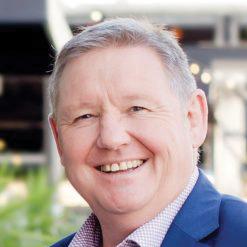
from him as the MDRT New Zealand chair.
Adding to the New Zealand team, Auckland adviser Tony Gribble will focus his efforts on the North Island, while Christchurch-based Travis Hamilton will look after South Island advisers.

MDRT in New Zealand is on the cusp of announcing an expansion to the breadth of its service offer to the extent that other industry contributors – such as those working within institutions who provide services to advisers – can also have access to the wealth and depth of resources available via the global organisation.
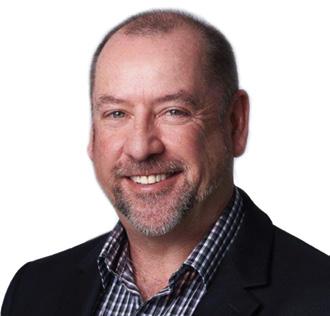
The Financial Services Council has appointed Rachelle HardieNeil to the newly established role of chief operating officer.
The new role strengthens the FSC’s senior leadership team, in order to bring even more value to the council’s 106 members and to fulfil its vision of growing the financial confidence and wellbeing of New Zealanders.
Chief executive Richard Klipin says HardieNeil brings “a wealth of senior executive experience” to the FSC.
HardieNeil joins the FSC after an 11-year stint at the New Zealand College of Chiropractic, where she served as executive vice president. Her experience spans across New Zealand, Australia and the United States.
“I’m looking forward to serving the members of the FSC and supporting the sector in addressing policy and consumer opportunities to raise the financial literacy and wellbeing of all New Zealanders,” says HardieNeil.
In early December, a large group of current and former colleagues joined family members to farewell Dave Wilson at Schnapper Rock on Auckland’s North Shore.
Dave passed away suddenly on November 22. He had been working as an Investment Strategist at JMIS in recent times, having done a similar role at NZ Funds for 24 years. He had previously worked at JB Were and the Reserve Bank.


Dave leaves behind his wife Shelly and sons Hayden and Riley, as well as many work colleagues who valued and enjoyed his gentle nature and dry wit.
He also leaves behind the results of his great out-of-work passion, restoring and repairing (repeatedly in some cases) vintage cars.
His favourite was his 850cc Austin Mini, which his eldest son will inherit, whilst his youngest son, Riley, is named after a variant of the mini.

I first met Dave in December 1996 when we were hiring for an investment strategy role. Naturally Dave got the job.
He not only had the highest intellect in the room, but he also listened generously and politely to views of others less well informed. Smart yet humble: two great traits in a colleague.
Throughout our 22 years as colleagues, most of it desk-to-desk, Dave displayed great commitment and perseverance.
He put up with not just his health challenges but also his colleagues, introducing some objectivity and lucidity to counter some of the more subjective views in the room. In an industry full of noise and egos, it was always great to listen to Dave’s calming tones.
His strong intellect and honesty would cut through the complexity, providing clients and colleagues with a clear understanding of the key challenges that financial markets presented. Gone too soon.
I and many others will miss Dave’s insights and enjoyable company. David van Schaardenburg is chief adviser of the Ignite adviser network. A
Ι Can we start off with Fidelity’s strategy - how are you evolving and where is the business heading?
Fidelity is on something of a transformative journey.
With cornerstone shareholders NZ Super and Ngāi Tahu on board, we are really on a journey to execute a customer-led transformation. That’s at the heart of our strategy.
We’ve certainly had a watershed year: first with the agreement to acquire Westpac Life in 2021, and now in 2022 completing that acquisition.

We welcomed 150,000 customers and 50 new team members to the Fidelity Life whānau. That’s a very big focus of ours: to integrate that business excellently over the coming months.
We also have something of a technology transformation and are making good inroads towards becoming a more digitally-enabled insurance company.
Ι How does having a different set of shareholders change the businesshow it operates and what its values are - compared to before as a familyowned business?
It’s interesting. The Watson family is still very much a shareholder of Fidelity Life, but we were delighted to welcome NZ Super Fund and Ngāi Tahu.
When you have shareholders who are motivated by multigenerational, long-term outcomes, it means we have a very different set of priorities and a different complexion of management decision-making.
We have a slightly different take on new-business volume and metrics such as market share, and much more focus on value - value that is going to go a long way in underpinning those long-term, certain outcomes for customers.
Ι When I heard you speak at the Wealthpoint conference, you said
Fidelity Life was more interested in looking after its existing customers than chasing new customers.
We are very committed to our existing customers. We invest heavily in a large team of retention resources and in helping customers conserve their protection when times get difficult.
It’s a very real focus for management, but also from our shareholders.
Ι How do you keep growing the business when the focus is on your existing customers and not necessarily on trying to onboard new people?
We remain committed to helping New Zealanders get protected, but not to the exclusion or detriment of our existing customers. There are lots of different ways we can do that.
We’ve demonstrated an inorganic strategy, which was to acquire
Westpac Life, and we remain deeply committed to the adviser community.
Ι So advisers still remain your number-one distribution?
Absolutely. We see advisers as delivering the best outcome for customers.
There’s a body of evidence and data which supports that approach, and we are deeply committed to seeing a sustainable advice community.
Ι What does this sustainable advice channel look like? And what does that mean for commissions?
This can be a sensitive topic. Commissions certainly have a place in underpinning a sustainable advice community. It is absolutely important that advisers are compensated fairly for the really important role that they play.
We have seen in other markets, particularly the Australian market, in regards to material changes to the level of commission paid, that one of the more negative results is that it has driven up the cost of risk-insurance advisers, with some fees at a minimum of AUD$3,000.
If changes were to be made to the commission frameworks here, we might expect similar adverse outcomes for New Zealanders.
That puts access to riskassessment advice well beyond the average New Zealander. For us, that is something we really need to try to avoid.
Ι Where do you want to go in terms of the structures, the commissions, and how it looks?
We welcome being able to engage relevant stakeholders and policy makers, to start a conversation on what is a really significant topic. We do think commission has a role to play; whether it's at the levels of commission that are paid today would warrant further scrutiny. We definitely support the prohibition of target-based incentives, but within the context of ensuring fair compensation for advisers that results in customers being able to access risk-insurance advice.
Commission must play a role in that.
Ι Do you see a change coming where there may be more of a fee-forservice model in the future?
I think there is opportunity for a variety of different models.
Hybrid models which include some commission and potentially some fee for service are already being discussed across the industry.
This is really positive; we can get on the front foot of working out what a sustainable arrangement might be.
There have been examples of fee-for-service models incorporated into some niche businesses and into other mature markets, too.
We have a very small insurable population here, so whatever we do it needs to be a model which is sustainable and doesn’t impact the customers' access.
Ι It sounds like you’d like to see some changes happen?
I think we’d all like to really close out the argument that the current model is not working and land on a model that is going to be sustainable.
Ι Do you have a preferred model in mind or is that a work in progress?
It’s a work in progress.
We don’t have a defined model or view of what ‘good’ looks like, but there are lots of different types of advice businesses emerging.
Some of these have scales that we might not have imagined three to five years ago.
Ι You’ve mentioned advisers leaving the industry and that there is a different, older demographic. What are you seeing?
There were claims that half of the industry was going to disappear from March (2022); that’s really not happening as was imagined.
There has certainly been some contraction in advice numbers, but those numbers have either left already or have signposted they won’t be continuing beyond March 2023 - and have not been actively giving advice for some time anyway.
So whether or not their exit has any sort of significant impact on under-insurance or growth in the industry, it's unlikely to be as severe.
Ι
Recently we launched a new programme called Career Connect.
We knew there have been multiple successful incidents of life insurers running career programmes, academies and training schools in the past.
We wanted to step in and play a role in bringing more youth and diversity into the industry.
In the programme, we have a really diverse mix of people - architects, plumbers, school teachers; an eclectic mix. In collaboration with a number of existing advice businesses in the industry, it will help make inroads.
That’s important, because the perception of the advice industry - dare I use the phrase, “pale, stale and male” - needs to change, to align more closely with the diversity in the population today.
Ι With Covid, you’re likely to see some different outcomes with claims. Can you give us a taste of what you think you might see there?
Recently we launched a new This plays into a general sense of uncertainty across our operating environment. There are a number of different factors there, such as the changing nature of morbidity claims.
At the moment, the data doesn’t necessarily point to anything conclusive on what Covid will be, or to how it will drive a material change in morbidity exposure, but there is enough data emerging in larger population bases, particularly in the US and the UK, which may indicate that we could have some challenges. A
‘The perception of the advice industrydare I use the phrase, “pale, stale and male” - needs to change, to align more closely with the diversity in the population today’
Shifting from basketball to insurance might not seem like a slam dunk, but the move has paid off for Calum MacLeod.
MacLeod spent seven years playing college and professional ball in the United States, China and Japan, before working another seven years in the corporate world in New Zealand.
A friend who advised him about insurance coverage for his family then
inspired him to get into advising himself.
“He did a good job and showed me how it works. I could see the value in having life, disability and health coverage,” says MacLeod.
The Wellington native entered the sales field after his professional basketball career. He wanted more autonomy, but

also craved challenge and opportunity.
“There’s a competitive culture within basketball. I wanted to do something in the workplace and not just be sitting at a desk. I enjoy moving around.”
He started selling photocopiers, but found the industry lacked the personal touch.
“In photocopier sales, people were seen as a commodity; they didn’t care about you as a person.
“There were a lot of players in the market, it was viciously competitive, and we were all selling the same thing.”
With insurance, though, MacLeod found he could provide clients with tailored solutions while forming longterm relationships.
“You want cover in place to protect you if something goes wrong. It’s a much higher-value interaction, not just a transaction.
“You’re there with people throughout their journey.”
MacLeod’s journey has taken him around the world, starting from his home in New Zealand before heading to Gonzaga University in Spokane, Washington, on a full athletic scholarship in 2004.
He played for the Bulldogs, a team which has made it to every NCAA Tournament since 1999.
During his time at Gonzaga, the sevenfoot-tall centre played with NBA players Ronny Turiaf and Adam Morrison.
He shifted to Northeastern Junior College in Colorado, then to Valparaiso University, Indiana, where he enjoyed playing while completing a degree in sports management and business administration.
The now-38-year-old’s work ethic was shaped in part by the rigours of college basketball.
MacLeod remembers how intensely driven his coaches were in the pressure cooker of elite sport.
“It gets quite draining when you play at that level. It’s very demanding. There are very high expectations, which takes a toll.
“Some coaches channeled their adrenaline in ways I believed were not helpful to me as a player.
“I also had no autonomy over my schedule. I was traveling all the time and training five hours a day.”
MacLeod knew life would be much different for his own team in the insurance world.
He says basketball taught him how he wants to be treated and respected.
“Especially when I was playing in the States, there’s such a high standard.
“The coaches are paid extremely well; they’re the top of the top, but expectations on the players are so intense.
“If we lost a game, we might get off the plane at 3 or 4 in the morning expecting to go to sleep. Instead, it was, ‘No, we lost the game, get your gear on and we’ll see you in the gym in 15 minutes.’”
MacLeod describes that kind of extreme ambition and punitive training as full-on, but says he learned through adversity.
Those formative years shaped how he would later treat advisers at Policywise, the company he founded – using guidance and constructive critique rather than yelling and blaming.
“I know what it takes to have a winning team, and I know what it takes to have the right people in the right roles.”
The education side of MacLeod’s American experience helped inspire his entrepreneurship. He credits Gonzaga’s business school for bringing in highnet-worth individuals to lecture and tell stories about how they started their own companies.
“They would talk about what they achieved and about their teams. They sowed a seed about being able to grow something from nothing.”
Grown from scratch, his own Policywise team now boasts seven staff in total - with others due to come on board early next year.
MacLeod says while he has traditional business goals involving revenue growth, his Christian faith is a formidable force in his life.
He sees success as an agent for good, rather than monetary gain.
“It’s bigger than me. You can reach money goals, but they’re kind of empty.
“When you do reach them, you create bigger ones. There’s nothing wrong with that, but faith is more the driver - and being in a position to help others.”
A group of nationwide advisers called Plus4 gives him a chance to engage with like-minded professionals.
“Everyone looks to help each other out, which is cool. It was really helpful to me in the early stages - a lot of them were established businesses and had been there/done that.”
He says the support and knowledgesharing made a refreshing change from his previous sales jobs.
“Coming out of the photocopier industry, a lot of people wouldn’t talk to their competitors. Advisory people are open and helpful with one another.”
The Government has made it tough for advisers to enter the market, says MacLeod. The compliance bar is set high, and advisers must have a Level 5 certification before they can work with clients.
“They want the adviser to be doing the right thing by customers, but at the moment it’s very hard for anyone new to come on board.
“Making it more supportive for young advisers coming in would help the industry.”
As for many in the industry, the pandemic compelled MacLeod to get more comfortable working online. He now connects with clients via phone or email, Google Meet, or Zoom.
“I think I’ve only had one customer in three years who wanted me to print out and post a policy document.”
Problem-solving will always be part of the job, he says.
He once helped a client who had a huge multiplier lumped onto an insurance premium due to a health condition. The client was charged double the quoted amount.
MacLeod negotiated with the insurer, who refused at first to budge.
He took his case up the chain, engaged in more back-and-forth, and slowly made inroads over the course of a week. Finally, the multiplier was removed.
“A lot of decisions insurers make are open to negotiation. It’s the same with claims, too.
“There’s an element of negotiation in our role to get the best outcomes for customers. Just like selling a house, it’s easier if you have a broker in between.
“We have those relationships and know those insurers inside and out.”
When he’s not helping clients, MacLeod enjoys time with his family, including his wife, seven-year-old daughter, and two sons aged four and two.
The brood enjoys the bounty of the outdoors, including rivers, beaches, parks and bike trails. MacLeod still shoots hoops to keep fit.
His advice to future advisers is to get your feet wet at a local brokerage. Learn the industry before hanging out your own shingle.
As for those already in the business, MacLeod says take it slow.
“If you grow too quickly, you can get out of balance and you can’t train people properly. It’s time-consuming to teach new people the business, but it’s worthwhile in the end.” A
‘There’s nothing wrong with [achieving money goals], but faith is more the driveralong with being in a position to help others’KS
With Kiwisaver assets now totalling more than $83 billion, the savings scheme provides advisers with a massive opportunity to diversify their revenue streams.
 BY JENNI MCMANUS
BY JENNI MCMANUS
Scott Alman, managing director and founder of Consilium, tells a horror story from the Covid-19 pandemic.
As the markets tanked in response to lockdowns and global chaos, an acquaintance of Alman’s watched in dismay as his KiwiSaver balance began to unravel.
Panicking, the man called his provider – an unnamed bank – seeking urgent advice.
When nobody picked up, he took matters into his own hands and moved his money from a growth fund to a conservative fund.
Worse, he didn’t switch it back when the market rebounded.
Had this investor been able to access financial advice, Alman says, he might have saved himself a heap of money.
The story isn’t unique. Thousands of investors made similar moves in early 2020 and in doing so wiped hundreds of thousands of dollars from their balances – losses which could have been avoided through access to clear and timely financial advice.
Trouble is, for the average KiwiSaver member, that advice can be patchy and difficult to find unless you’ve joined an adviser-led platform such as Consilium
or InvestNow. And most certainly it will be expensive.
But with rising KiwiSaver balances and the Financial Markets Authority (FMA) determined to stamp out referrals and trail commissions – the traditional way advisers have been remunerated – some insurance and mortgage advisers are upskilling and turning their attention to KiwiSaver.
Key to their success will be understanding where advisers can add value.
Greg McMaster, head of client partnerships at Salt Funds Management, says with KiwiSaver showing doubledigital growth, advisers have a real opportunity to think about the structure of their businesses and figure out how to grab a slice of the market.
“The KiwiSaver market is evolving and becoming a genuine possibility for advisers,” he says. “It has now given all advisers a way to think about further diversifying their business’s revenue stream.”

According to Morningstar’s September KiwiSaver survey, assets under management total $83.5 billion - and
McMaster says some reports are predicting a 15% growth rate.
“Even if it grows only 10% over the next 10 years, you’re looking at a book of assets well in excess of $200 billion. It’s a massive growth area which creates opportunities.”
McMaster believes the Consilium/ InvestNow adviser-driven platforms are the way of the future.
Many of the advisers he talks to would be interested in the platform model for balances of $150,000-plus.
“The market will get there by evolution,” he says. “But I do think advice around [being in] the right fund is also important - understanding your time horizon and what you’re trying to achieve when you retire.”
It is key, he says, that advisers also understand how to have conversations with their clients when they are panicky.
Scott Alman is a big believer in advice.
In fact, only advisers are permitted to access Consilium’s KiwiWRAP KiwiSaver platform, where, on behalf of their well-heeled clients, they can design and customise KiwiSaver portfolios from more than 400 investment options.
It’s the sort of choice that’s available only with a wrap account, Alman says, and light years away from the typical KiwiSaver model, where fund managers make calls on behalf of their memberswhose choices are restricted to deciding on type of fund and contribution level.

The level of transparency is also different. KiwiWRAP investors and advisers can see clearly the cost of the scheme, the investments and the advice.
But in a mass-market KiwiSaver scheme where advisers are typically paid referral fees and trail commissions – supposedly for giving ongoing advicefees and other costs are more opaque.
Worse, at least in the opinion of the FMA, they are bundled into a general management fee which is charged to all members of a scheme, regardless of whether they have joined direct or through an adviser, and regardless of whether they want, or are actually receiving, ongoing financial advice.
The biggest controversy is around how advisers will be paid.
Going forward, the FMA has warned KiwiSaver providers that as balances grow and financial advice becomes more
important, they must find an alternative to referrals and trails.
The only real option is a fee-for-service model, already used by Consilium, InvestNow, Koura and a few other providers.
But will clients be prepared to pay?
At the top end of town, where KiwiSaver balances run to six figures, clients are more likely to recognise the need for personalised advice.
With a big chunk of money at stake, they usually see the sense in paying an adviser.
But at the other end of the spectrum, where the average balance is somewhere between $25,000 and $30,000, individual advice might not be useful or make economic sense.
One thing is for sure: because of perceived (and sometimes actual) conflict of interest issues, fund managers will not be buying a book of advisers to sell the scheme’s products.
“It’s vertical integration,” said one, who did not want to be named. “It’s exactly [the sort of behaviour] that caused the Australian Royal Commission.”
So, how do KiwiSaver members with average balances access sufficient advice to make the most of their accounts?
Many schemes have online advice tools to help investors choose the right fund, but few, if any, are offering in-depth personalised advice.
Some, such as Generate, say an adviser will call all new members to ensure they have enough information to make this choice.
Similarly, Rupert Carlyon’s Koura KiwiSaver scheme uses a combination of online tools, personal phone calls and fee-for-service advice as part of its KiwiSaver offering.
But investors generally won’t get a personalised financial plan unless they make a point of seeking out an adviserand are prepared to stump up for the fee.
Alman says the tipping point, where advisers can add value, is a KiwiSaver balance of around $50,000.
Below that, he says investors are better off in a managed-fund style of KiwiSaver.
Not everyone agrees. Anthony Edmonds, managing director of InvestNow, says it can definitely be worthwhile for someone with $20,000 in their KiwiSaver account to get personalised advice.
‘The KiwiSaver market is evolving and becoming a genuine possibility for advisers’
Greg McMaster

“People need advice for all sorts of reasons, regardless of where they are on their investment journey,” he says.
Edmonds runs a platform similar to Consilium, but it’s not adviser-only.
While investors are strongly recommended to get financial advice –and 35% to 40% of InvestNow KiwiSaver clients are working with an investment adviser - some members prefer to do it themselves.
Many InvestNow clients have decent balances, Edmonds says. Six-figure sums are not uncommon, and several who signed up for KiwiSaver at its inception in 2007 now have balances that equate to a year’s salary.
“Our experience of working with advisers is that their clients have quite meaningful balances, in excess of what you see quoted as industry averages.”
InvestNow has a deliberate strategy of partnering and working with advisers.
“The business model we’re working with is all about giving and receiving advice,” he says.
“We’ve had good success in growing key relationships with good adviser groups who like the platform.”
He's not interested in advisers who are seeking trail commissions “and the advisers who like trail commissions don’t
Proposals to tweak KiwiSaver are likely in the run-up to next year’s general election.
But Henry Tongue, Generate KiwiSaver chief executive, says the focus on fees has drowned out the KiwiSaver conversation the country needs to be having around contribution rates and retirement goals.
“It would be great to see the Government launching a public-interest advertising campaign to ‘get advice on your KiwiSaver’.
“There is a genuine need, and there are advisers ready and able to provide it. The benefits would be enormous.”
Retirement Commissioner Jane Wrightson is another who wants contribution rates increased, to a minimum of 5%. She is also calling for KiwiSaver to be made compulsory.
Wrightson doesn’t think the current government will be brave enough to make these changes, but the opposition might be persuaded.
She is urging the financial services sector to collaborate with the Retirement Commission and lobby the Government.
like our KiwiSaver scheme”.
It’s all about fee-for-service, and Edmonds doesn’t think he’s particularly picky when it comes to advisers.
“The business model does it for us,” he says. “It shapes who we’re going to work with.”
“We can tell right at the outset when talking to an adviser whether they’re right for us, because our fee model will be something that they welcome - or they say ‘no, I definitely need to get a trail’.
“It’s almost as if they don’t want the clients thinking about the fact that [they’re] getting paid.
“The people we work with actually want their advice fees disclosed and seen and transparent, so the clients know they’re paying for the advice as opposed to a trail.
“These are two very different approaches to advice.”
Like Alman, Edmonds says the platform is all about choice.
“Our product is well-suited to being used by advisers because they can use combinations of different managers.
“For example, we’ve found a lot of advisers might use a combination
Rupert Carlyon, the founder of Koura Wealth, says the current 3+3 contribution rates “are sleep-walking to disaster”.
Noting that the OECD average for superannuation fund contributions is 15%, Carlyon thinks we should be aiming at 12%. And a tax break would help.
On another front, Carlyon is petitioning the Government to change the KiwiSaver Act to create a voluntary scheme enabling couples to share their contributions, so the partner who takes a career break to raise children, or works at a lower-paying job, is not disadvantaged in retirement.
He has close to 1000 signatures and is having conversations with the industry and “down in Wellington”.
“What we’ve shown is that there is a clear desire for it to happen,” he says. “For a lot of people, it’s not seen as a difficult or expensive change and doesn’t cost the taxpayer any money.
“It’s just figuring out whether we can get the system in place to make it happen and get it prioritised in Wellington.”
of different growth funds to get diversification. We can see that this smooths out returns – it takes out some of the volatility.”
To understand the variance in returns between managers, Edmonds says to look at the past year: it shows a “huge disparity” from diversified growth funds on the platform, depending on investment style and process.
“That’s the sort of thing where advisers can add real value.”
Scott Alman says his adviser numbers are growing, as is his 200-strong member base. The average KiwiWRAP balance is $130,000, and the platform manages assets of $30 million.
“The young advisers get this straight away,” he says. “They get that their target market is typically high-income, not-richyet Henrys.
“But changing adviser habits and behaviours takes a long time, because they have a fixed way of doing things, they are very busy, and there is a huge demand for their services.
“But we’re not for everybody.”
Like Edmonds, Alman dislikes trails, especially if they are embedded in management fees.
“Nowhere in the world is that a model that anyone thinks is healthy.”
Carlyon also wants to see changes to the system of appointing default KiwiSaver providers.
Rather than default providers being reviewed every seven years, any provider with assets of more than $100 million should be allowed to apply at any point.
The current system “gives a hand-up to the big guys,” he says, when most innovation and diversification is coming from the smaller KiwiSaver players.
Consilium chief executive Scott Alman would like to see an uncoupling of employer-employee contributions so if an employee stopped contributing because of financial hardship, the employer’s contribution would continue.
At present, if an employee stops contributing, the employer has no legal obligation to contribute.
“To me, that’s egregious,” Alman says. “It seems to penalise those most in need in our community.”
In his view, the employer contribution should be increased to 9%.
Others would like to see changes to limit the portability of KiwiSaver schemes.
Because members can easily change providers, most KiwiSaver schemes will not invest in much-needed private-sector infrastructure in New Zealand as they fear a run-on funds.
For Koura’s Rupert Carlyon, having the correct fund structure is the most important driver of returns – something his business tries to ensure investors get right from the start.
To do this, Koura uses a digital advice tool, enabling it to understand a client’s investment horizon and approach to risk. From there, for a fee, it will build a personalised KiwiSaver plan.
“We are the only KiwiSaver provider that makes every client go through a digital advice process before they sign up, to ensure they’re in the right fund.
“It’s by far and away the most important thing we can do for them,” Carlyon says.
A recent survey done by his firm reveals somewhere between 20% and 40% of New Zealanders are not in the right type of KiwiSaver fund for their investment horizon.
Koura’s approach is “a critical way, and an easy way, of making sure that every single client has the opportunity to get that answer correct”.
Unlike most mass-market KiwiSaver schemes, Koura will also advise on contribution levels, how much clients will need for their retirement, and whether they are on track to achieve this.
“We hope that goes a long way to closing some of the advice gap,” Carlyon says.
Sitting on top of that is a next-level, user-pays “facilitator product” which advisers can introduce to their clients.
“We’ve tried to design a product that aligns with where the FMA is trying to push everyone on value for money.
“They’ve made it clear they want people to be explicitly paying for advice versus having it embedded inside a product which is what most of the others do.” A
A scrap between the Financial Markets Authority (FMA) and some managed funds providers about the regulator’s Value for Money guidance could end up in court.
The FMA has accepted the status quo – that both trail commissions and referral fees are embedded in the provider’s general management fee and charged to all members - as it does not want to discourage investors from seeking advice by requiring them to pay separately for it.
But as balances rise, this will change.
Paul Gregory, FMA director investment management and acting director capital markets, says its preference is for fees charged for advice to be separate and it expects providers develop new business models to comply with the VFM guidance.
At this point, things are likely to turn ugly.
ASSET has been told that those who have built their businesses around trail commissions and want to retain them have engaged lawyers and will fight “very hard”, making the FMA’s job more difficult.
“If there is resistance from within the industry, making [separate fees] happen will take a very long time,” one market-watcher said.
The VFM guidance is in line with the FMA’s other moves towards customer-centric businesses in the financial services sector and the overarching principle of treating customers fairly, as required by the Financial Markets (Conduct of Institutions) Act.
Pathfinder Asset Management chief executive John Berry says he expects New Zealand will eventually move to the model where clients will pay separately, but it would make more sense if balances were higher.
He points out that fund managers can offer advice only on their own products and the advice offered by an independent adviser would be wider and more in-depth.
“We won’t do a detailed personalised advice for most of our KiwiSaver members,” he says.
But if a “reasonable-sized” investor were to bring in a portfolio and wanted an investment conversation, Pathfinder would put that investor in touch with Alvarium, its financial advice arm.
Generate KiwiSaver chief executive Henry Tongue strongly believes advisers and advice improve outcomes for its KiwiSaver customers.
More than 95% join through an adviser and those who join direct will be contacted.
But a huge investment in KiwiSaver advice is needed, he says, and should go beyond fund choice and risk profiling to cover areas such as contribution rates and retirement goals.
Tongue notes the reluctance of KiwiSaver members to pay upfront for advice, saying the recent Levy Quality of Advice review in Australia made similar findings and has recommended bringing back commissions and collective charging for advice.
He is a defender of the status quo.
“Although the FMA has expressed a preference for separate agreed advice, our understanding is that provided your commission arrangements are appropriately and adequately disclosed, so members are aware of who is paid and for what, there is no problem with it,” he says.
“I strongly believe we need to be focused on the outcome, and the FMA says it is an outcome-focused organisation. The outcome we all want is for more Kiwis to have better access to financial advice.
“We need to be very careful that whatever we do, it doesn’t have the unintended consequence of driving people away from advice.”
Advisers need some certainty about future remuneration models, Tongue says.
“The current regulatory scepticism around existing remuneration structures, coupled with rising regulatory costs and compliance burden, paints an uncertain future.”
As one of the few women entering what was a very male-dominated industry, financial planner Maryann Pratt deliberately took a more caring approach: she didn’t want to have a huge number of clients she hardly ever saw, preferring to serve a smaller number extremely well.
 BY JENNI MCMANUS
BY JENNI MCMANUS
On the desk of her Palmerston North office, financial planner Maryann Pratt has a postcard showing a grid-iron player being felled by a serious tackle.
Beside the image are the words, “Determination: it’s not whether you get knocked down but whether you get back up again.”
Pratt, the major shareholder and managing director of Professional Investment Services, has had the postcard on her desk for most of the 25 years she’s worked in financial services.
It reminds her, she says, of her early days as a young, female adviser in an industry where sexism and harassment were rife.
“There were some dark days in those first few years. It was pretty tough to get back up.
“It was a hard slog and I’m pleased I had people surrounding me who kept picking me up.”
A tied AMP agent when she joined the industry, Pratt recalls a conference she attended with her then partner.
There were a lot of “really old AMP agents” at the event, she says, who automatically assumed her partner was an adviser because he was male.
On discovering that her partner was in fact a teacher and Pratt was the adviser, one agent turned to her and said, “Why don’t women wear watches? Because there’s a clock on the stove.”
Pratt was horrified by the comment.
“I was really taken aback. I felt really uncomfortable, really unwelcome.
“And then I thought, ‘Stuff you, you crusty old man. I’m going to do this and I’m going to be really successful, I’m going to really look after people and do an amazing job, just to spite you for saying that to me.’
“That was my insight when I started in the industry; it was predominantly older males, and I was a young female trying to negotiate the landscape.”
The work itself was tough, too. “Ten calls by 10am” was the rule for AMP agents and one night a week they were required to use the electoral rolls to coldcall prospective clients.
“We knew it took about 10 calls to get one appointment and you needed to get five appointments, so it meant you had to do 50 calls that night,” she says.
“During the day, I’d walk the street, go to industrial areas and knock on doors.
“I was doing it all: fire and general, life and the investment side.”
It was a tough way to make a living, but people were generally “not rude” - and some of those early clients are still with her today.
What kept her on track was the support of two advisers she calls “the two Johns”: John Barber and John Fothergill.
After AMP disbanded its adviser network, Pratt and the two Johns set up their own business unit where she stayed for three years.
In the mid-to-late 1990s, the investment landscape was very small.
Unit trusts, the forerunner to today’s managed funds, were in their infancy.
The dominant products were old-style superannuation plans “with that really horrendous upfront fee which I never sold, because I thought the amount of money those advisers were taking from signing was so bad”.
Pratt focused on unit trusts. She struck out on her own for a year but found it very tough.
Then, in 2001, she and another adviser, Alison Lissington, were invited to join Professional Investment Services Manawatu. The business model came from Australia and was aimed at accountants who wanted to provide financial services but didn’t want to do it in-house.
Pratt and Lissington grew the business organically, initially relying on leads supplied by local accounting firms.
Along the way, Pratt became a Certified Financial Planner, and the pair moved away from selling fire and general cover.
“I wanted to stick to core financial planning, which, in my mind, is wealth creation, investment, KiwiSaver and the risk side,” she says.
“We did the hard slog, did the good work, got referrals and started to grow very slowly. It wasn’t exponential.”
The tipping point came about five years ago when they bought a business from Ben Jones, an adviser who was seriously ill.
“He had a nice, smallish boutique business that really fitted with our values and our core beliefs,” Pratt says. “It gave us an extra staff member and that’s when it started taking off.”
Gradually, Pratt also bought out most of her fellow shareholders.
“I felt the business was floundering and wanted to have that major holding so I could drive it forward.”
The team grew from three to eightand another adviser is due to come on board next year.
Pratt sees herself as a financial planner, rather than as an adviser.
The two are different she says, with planners “doing the spreadsheets, calculating what it will take to get to [the client’s] goals, and provide a robust blueprint.
“You’re working on the big-picture plan… making sure people will get to where they want to be. In my mind,
an adviser is giving advice only in a specific area.”
Nowadays, her clients almost always come from referral.
“We tried marketing campaigns, where you get random people ringing up, and it just wasn’t our thing,” she says.
“We weren’t attracting the right people, so we very soon learnt that [lesson] and decided to work through referrals.”
Her clients are “good, down-to-earth people”, Pratt says. “They’re small business owners, they’re professionals, they’re people who’re busy who just want someone to take care of their finances and tell them what to do and when to do it.
“Most importantly, they’re ‘advicecentric’.
“They want advice, they listen to it, and they act on it.”
Pratt says she loves immersing herself in her clients’ needs, wants, goals, issues and family and business lives.
She puts great store on setting a clear plan and helping clients achieve it.
“It’s being with the people, holding their hands and taking them through the journey,” she says.
“When I started in this industry, I would look around the room at advisers who had thousands of clients and I just couldn’t get my head around how they were going to service that many people.
“I never wanted to be like that.”
“I wanted to make sure that if I’m looking after someone, I really am – and they know they can call me at any time.
“I will contact them at least annually and get them to come in and review how they’re tracking.
“I wasn’t so interested in having hundreds of clients that I never saw, who would pass me in the street and never know who I was.”
Within the business, there’s a big focus on personal development.
She herself has a business coach who puts her through her paces to ensure she’s growing the team, the business is on track, and that she’s evolving as a leader.
Asked about the qualities needed to run a financial-advice business, Pratt says it’s all about understanding what people are trying to achieve – whether it be a client or a team member - and helping them to get there.
And despite her earlier struggle with sexism in the industry, Pratt still thinks financial services is a great career for women.
“There’s an amazing place for females in this industry, with the care and nurturing and expertise they bring.
“All the female advisers I know are exceptional in what they do.” A

Isuspect that the majority of clients work really hard to build an asset base significantly large enough for them to retire comfortably, thanks in no small part to your ongoing advice and guidance. Have you considered what a severe bout of poor health, possibly a terminal illness, might do to that retirement nest-egg and the client’s ongoing financial ability to remain comfortably retired?
Picture the following: your clients have recently retired; the family home is mortgage free; NZ Super is making its way into their bank accounts; their health is good, and they are looking forward to several exciting years travelling before they eventually ‘settle down’ in ‘real’ old age. Hard work, discipline and your coaching has helped them build a respectable $350,000 retirement nestegg, of which some will be used to fund their travel aspirations and the balance used to supplement NZ Super. A couple of years later, your client calls you for advice on a reverse mortgage on their home. Surprised, you ask them why they need this. Your client explains that their partner was unexpectedly diagnosed with an aggressive cancer and, because the recommended treatment was not Publicly funded, they used most of their retirement nest-egg to fund these treatments. Now they may soon need to start eating into the equity in their home. Their happy retirement has disappeared, along with their financial security!
Could this financial disaster have been avoided? Could your clients have protected their retirement nest-egg?
The obvious answer is probably yes - if they had suitable health insurance. Perhaps they had health insurance but cancelled it because it was getting expensive, and they thought their health was good. They probably didn’t cancel their house, contents or car insurance, yet their retirement nest-egg was also a valuable asset, probably more valuable than their car and contents combined, so why did they cancel their health insurance? – what has gone wrong here?
In my view, an appropriate health insurance policy, one that also adequately covers the costs of treatments not funded by the Public Health System/PHARMAC, is essential for protecting wealth. This is especially the case in retirement, when poor health becomes even more likely, and the ability to go back to work to earn enough to recover financially is probably not possible. All clients are healthy
before they get sick, so ‘being healthy’ or ‘leading a healthy lifestyle’ is no reason not to have health insurance! If premium cost affordability, real or perceived, is the barrier, there are ways of significantly reducing some health insurance premiums by removing options and selecting a high excess.
For example, Partners Life’s Private Medical Cover, without the Specialists and Tests Option (which covers relatively insignificant costs of specialist consultations and minor diagnostic tests, which are easily self-funded) and with a $10,000 excess, would cost a couple of 65-year-old non-smokers about $44 per fortnight each (give or take a dollar or two depending on gender). Incidentally, Partners Life’s Private Medical Cover will pay a funeral support benefit of $10,000 on death too, so that will help cover the costs of a funeral.
The costs of treatments approved for use in NZ but not Publicly funded can be eye-watering and very quickly deplete even relatively large retirement nest-eggs, ultimately putting the family home at risk too. The ability to pay health insurance premiums in old age (or at least the first 10 or 15 years of retirement) is an issue for many, so putting a little extra aside from an early age to fund health insurance premiums in retirement should be considered. Bumping up the employee KiwiSaver contribution to the next contribution rate will certainly help!
One might question the point of health insurance with such a high excess. Personally, and assuming getting treatment in the Public System is not practical or possible, I’d be a lot happier only having to take $10,000 out of my retirement assets to pay for private medical treatment and have my insurance company pay the rest (my excess cost is fixed and manageable).
Private Medical Cover could pay up to $600,000 per year or even more, depending on medical treatments required. (Incidentally, in many policies, an excess applies to all treatments in a year, not to each individual treatment.)
When one considers that required medical treatment costs may arise over multiple years, and with quick access to treatment in the Public Health system less and less likely as the Public Health system struggles to cope, Private Medical Cover, even with a large excess, seems like a sensible idea. Of course, poor health can, and does, strike at any age. Clients should get health
insurance when they are young, when their health history is still good, making acceptance of cover almost certain. Health underwriting requirements and maximum entry ages could make acceptance of applications for health insurance tricky, or even impossible, once retired.
I’ve used an example of clients with a mortgage free home and $350,000 in retirement assets: I think the merits of having Private Medical Cover in retirement are no different for clients with much bigger retirement nest-eggs. Private Medical Cover is protection for assets in the same way that house insurance is protection for an asset, it doesn’t matter whether the house is worth $800,000 or $3 million. A client with $3 million in retirement assets will have an expectation of a retirement lifestyle that $3 million would allow. Seeing that reduce due to poor health, by hundreds of thousands of dollars, perhaps even down to $2 million or less, seems totally unnecessary for the sake of a couple of hundred dollars in monthly health insurance premiums.
Simply cancelling life, trauma or health insurance on retirement is not the obvious answer, even for wealthy retirees. Appropriate health insurance is essential for protecting client wealth, and, with the right advice and policy structure, affordable even in old age. Clients might also wish to have some trauma cover in retirement, to fund expenses associated with severely poor health not covered by health insurance. There are trauma products available in NZ now that only cover severe trauma events (those with large, wealth destroying, financial consequences) with much lower premiums, making trauma insurance more affordable in retirement too. Insurance advice for all clients is essential, but it is especially critical for retired clients. A
Steve Wright has qualifications in Law, Economics, Tax and Financial Planning and is General Manager Product at Partners Life.
This article is for information purposes only, its content is intended to be of a general nature, does not take into account any person’s financial situation or goals, and is not personalised financial advice. It is recommended you seek advice from a financial adviser which takes into account your individual circumstances before you acquire a financial product. This article does not include all the information advisers need to make suitable recommendations. As always, advisers must make up their own minds about the matters contained herein, in particular by examining the relevant policy wording.

There’s room for the advice sector to double, if not triple, in size in 2023. Russell Hutchinson explains the opportunities, and looks at one of the roadblocks: people don’t like taking advice.

After three bruising years, the life-insurance sector is not producing anything like the levels of new business it once was.
While some of that business may not have been the picture of excellent personalised advice that we want to see, there is plainly a huge gap in provisionand that gap has got bigger.
A return to growth is due. Let’s make that a priority for 2023.
There are some obstacles, and they are hard to work on, but, unlike many of the challenges of the last couple of years, they are within our control. That should give us cause for optimism.
Advisers are the bloodied champions of the channels: although production is down across the board, they have proven to be the most resilient of all channels.
Unlike the others, they are best positioned to grow rapidly. Provided the new conduct of financial institutions law does not clobber them further, they could lead the recovery in new business levels.
But set aside, even, the issue of those with some cover but not quite enough (underinsurance), and consider just those people who have no insurance whatsoever: If they all had as much as just the market average – which is well below what is ‘ideal’ – the protection gap costs New Zealanders more than $2.5bn a year in claims that would have been paid.
The sum of claims foregone by the uninsured exceeds $600m annually for life cover, is greater than $695m annually for trauma cover, and is about $1.45bn for income/mortgage cover.
There are some significant measurement challenges with all surveys of the protection gap, but we are confident that this number represents the low end of the estimate range.
There is, in effect, room for the sector to be at least double, if not triple, its current size.
That is one heck of a large opportunity for advisers. There is plenty of insurance business to be done!
So why aren’t we better at reaching these people? Sure, it is not just about advisers.
About 10-15% per cent of the market is probably group business, and about the same again is probably direct (depending a lot on how you define ‘direct’).
To summarise Godin’s excellent post (and you should check out their site yourself: simply google Seth Godin), the reasons people do not take advice are roughly:
1 They don’t really trust that it is valid or good
2 They think their case is ‘special’
3 They just want reassurance – not to actually change anything
Assuming you have sorted your full licence, this little dose of optimism is for you. If you haven’t got your full licence application in yet, then please, stop reading, and go do that!
Having got your full licence, there are two big reasons why you should feel optimistic about the next few years:
1 There are lots of people that need your help
2 Reaching them is mainly a task within your control
The impact of the protection gap is loss. It is a story told in homes which have to be sold, kids moved from their schools and their friends, cramped accommodation (moving back in with Mum and Dad while a parent recovers from a disability) and the long tail of problems arising from that disruption.
How big is that gap? There have been many attempts to estimate it.
The Financial Services Council’s work of 2011, in conjunction with academics at Massey University, is the leading example in terms of the robustness of method.
And insurance sold, advised, or referred from banks may make up about 15-20% these days.
The rest is advised. That’s the biggest and most robust segment.
Although there should be growth in the other segments too, as the sector returns to growth, I want to argue that you can go and get your share – and provided you have your full licence, the sooner, the better.
In addition to the protection gap, there’s an advice gap.
This is not your fault, but if you believe in advice, it is definitely an area that needs your attention. The problem is that people aren’t very good at taking advice.
Marketing commentator Seth Godin wrote recently about this problem: why advice is not taken.
He wonders why more people don’t take the advice that’s on offer. Instead they ignore the problem, deny that there is one, or flail around with their own DIY efforts.
In essence, they try all the things that don’t work first, before finally giving up and doing the right thing.
On a personal note, I have learned –slowly, I admit – that there are plenty of things I am not very good at, and most things are more complicated than they first appear.
Even fairly humble home-maintenance tasks, such as plastering and painting, are usually best done by someone other than me. Even in the age of excellent, free, YouTube tutorials.
Most people do not yet accept that they need financial advice; they think it can be obtained free online; or maybe they think they are doing as best they can right now.
This is the real problem: how to take lots of people on a journey from denying the need for advice to accepting advice and taking action.
The causes of this denial are procrastination, fear, self-deception, or just being a bit too cheap: penny-wise yet pound-foolish.
These roadblocks must be the targets of our creativity and marketing.
We must convince people that their lives would be better off if they spent a bit of time and money – often not very much – to work on improving their financial management generally and their insurance programmes specifically. A
‘People don’t take the advice that’s on offer. Instead they ignore the problem, deny that there is one, or flail around with their own DIY efforts.’
‘The problem is that people aren’t very good at taking advice’
David van Schaardenburg looks at the adolescent Kiwisaver scheme’s report card – and at what should be done to ensure a smooth and successful transition into adulthood.
Fifteen years into its life, the teenager that is KiwiSaver is increasingly gaining attention, and is being analysed from ever more diverse angles.
KiwiSaver’s early life was more buoyant than many expected, with far greater popularity. However, like for any teenager, life has its ups and downs: living in a repetitive world of school, chores, and so on, often feeling constricted by too many house rules.
As you’d expect, between the ages of 10 and 15 there’s been a lot of growth: KiwiSaver’s diet of annual contributions has grown by 85%, its popularity by 16%, meaning its overall mass is now 120% greater than five years ago.
However, it is also a lot more expensive to look after, with annual costs now 99% higher than five years ago – a little more efficient relative to its size and growth, but only modestly so.
With cost inflation of $344 million over the last five years, KiwiSaver’s suppliers are doing pretty well from the savings scheme growing bigger.
At the same time, there’s a lot of KiwiSavers who are not growing at the same pace as the average, be it due to low/no contributions or sub-par returns.
So even though KiwiSaver is only three years away from being classified as an adult, it still appears to have a long way to go before it can be considered fully formed.
Let’s consider how KiwiSaver could further develop to become an ideal young adult by the time it reaches 30.
For the first time in KiwiSaver’s life, leaving aside its GFC-induced baby tantrums and one-month pandemic panic, it is staring at a major FAIL on investment grades.
In the six months to 30 September 2022, the average balanced fund managed by the largest six KiwiSaver providers (who have c.70% market share) had a negative 9.3% return. Over this period, KiwiSaver has gone through a paleo-style diet suffering size contraction of near $8 billion.
Across those six large KiwiSaver providers, the range of balanced fund returns varied from -8.1% to -10.6% - one of the rare times when both defensive assets like bonds and growth assets have fallen in value.
What is also striking is that despite the higher volatility evident in financial markets this year, the range of returns between the main KiwiSaver providers is reasonably narrow, which may reflect a lack of diversity in investment styles and therefore genuine investment ‘competition’ and pursuit of investment excellence.
So while there is the appearance of lots of investment choice in KiwiSaver, if most of the main providers are
substantially doing the same thing then your KiwiSaver choices are akin to varying shades of the same colour paint. Or maybe lack of excellence.
The solution? Enhance investment choice and competition by having the KiwiSaver equivalent of Australia’s self-managed superannuation funds (SMSF).
For your KiwiSaver account, you could have one central administrator but be able to build a bespoke investment portfolio, tailored - usually with an adviser - to your own needs.
The ability to have customised portfolios would materially increase solution and outcomes diversity and, I’m sure, the level of competition (lower fees?) across the investmentmanagement and advisory industries.
While KiwiSaver’s rate of recent growth through its younger years appears impressive, it’s going to tail off quite early in its life; for many, it may not be as effective in achieving the purpose for which it was designed.
At present, only 61.2% of KiwiSaver members are adding to their portfolio through their own contributionsbetter than five years ago by 4%, with contributions from those members on average 56% higher than five years ago, equating to $6,083 annual savings per contributing member.
Unfortunately, this will not accumulate to the required $700,000-plus (in today’s dollars) in household financial savings to live a reasonably comfortable retirement lifestyle.
Solution: increase the 3% minimum employee and employer contribution rate to increase the probability more households will live comfortable retirement lifestyles.
While chunks of the 1.2 million noncontributing members are made up of under-18s, retirees, and non-working students, the proportion of the workingage population who are contributing to KiwiSaver is still too low, which I’m sure will further contribute to societal inequities in older age.
In the latest KiwiSaver year, the Government gathered $256 million in taxes from KiwiSaver members.
This sum could be recycled into contributions to member accounts who are not contributing or where people are not KiwiSaver members due to financial reasons: maybe a minimum $500-a-year Government contribution to 25-65-yearolds’ KiwiSaver accounts, whether they are contributing or not, and even if they haven’t signed up to be a member.
This would go some small way to ensuring all New Zealanders have some level of financial savings at their time of retirement.
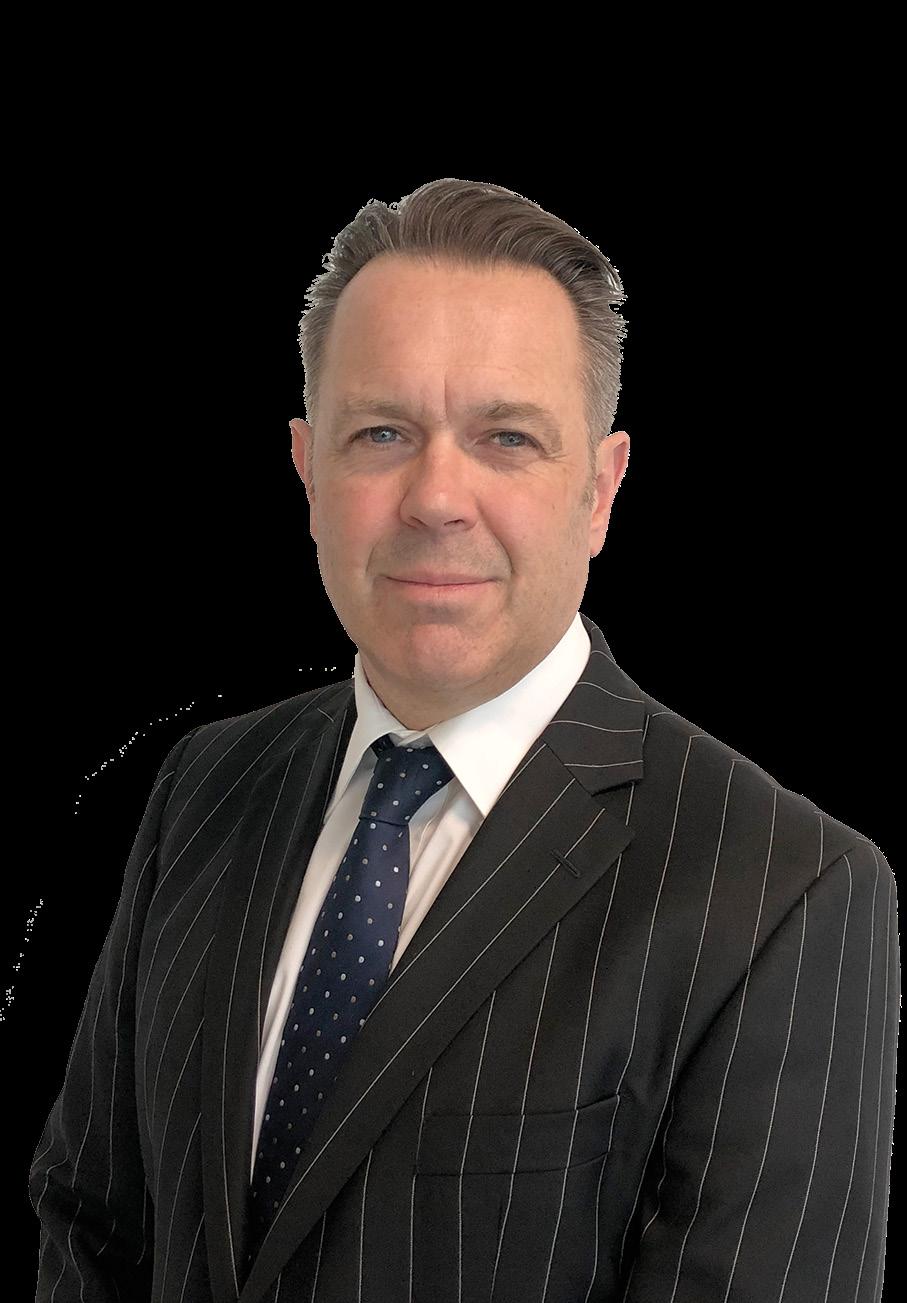
Without further subsidies or minimumlevel growth to further stimulate contribution levels, there is the risk that not too far away, as more baby boomers retire, withdrawals from KiwiSaver for retirement, which grew 306% between 2017 and 2022, will exceed contributions.
Time to get ahead of the aging curve in our society by making long-term saving via KiwiSaver more attractive for a wider proportion of our working-age population.
Similarly, when life is financially tough, households should have easier and quicker access to their KiwiSaver savings.
I’m sure many households don’t participate in KiwiSaver or minimise contributions for this very reason. Why have savings if you can’t access them when you need them?
‘KiwiSaver’s successful first 15 years have primarily been through good design, which in large part was due to effective industry consultation ahead of
‘For the first time in KiwiSaver’s life, leaving aside its GFC-induced baby tantrums and onemonth pandemic panic, it is staring at a major FAIL on investment grades’
In September, koura launched a petition to Parliament asking for change to the KiwiSaver Act. Rupert Carlyon talks about why, what the petition aims to achieve and how to get involved.
The petition – the KiwiSaver Parity Project – asks for change to the KiwiSaver Act, to allow couples to share their KiwiSaver contributions. Why do you believe this is important?
KiwiSaver turned 15 this year, and as the FMA confirmed in their latest KiwiSaver annual report, more and more people are joining the scheme. It’s further proof that it has become a household name – the central pillar of many Kiwis’ retirement plans.
As such an important tool for Kiwis’ retirement savings any flaws or ways that the system can be improved have to be addressed.
The current KiwiSaver system disadvantages the primary carer in the couple for foregoing paid work to have and care for children.
While families come in different shapes and forms, it’s often women who end up
earning less due to family responsibilities and the gender pay gap. And this impact on earnings translates to lower KiwiSaver balances: as Te Ara Ahunga Ora Retirement Commission reported earlier this year, the average KiwiSaver balance for women is 20 per cent lower than for men.1
A voluntary Contribution Sharing Scheme would allow couples (whether married or de facto) to share KiwiSaver contributions to ensure that the person foregoing paid work to have and/or care for children, earning less due to family responsibilities, or earning less due to various pay gaps compared to their fulltime working partner, is not financially disadvantaged in retirement.
party’s consent, a partner would not be able to opt in. And once they’ve opted in, they can opt out at any point in time.
From a KiwiSaver provider perspective, as described here, I believe it wouldn’t be a difficult option to implement, with administration by the IRD. Of course, that is the koura view: we’re reaching out to other KiwiSaver providers to get their thoughts on the proposed change and how it could work.
The proposed Contribution Sharing Scheme would be 100 per cent voluntary: Couples could choose whether they want to split the highest earning partners’ annual contributions, what percentage, and for how long.
Both partners would have to sign a consent form and send it to their KiwiSaver provider: without the other
Yes, KiwiSaver savings are part of matrimonial property and divorce proceedings, meaning the combined savings value would be split in case of separation. But the ability to voluntarily share KiwiSaver is about giving both partners control and confidence over their savings at every step, throughout their retirement savings years.
Fundamentally, it’s about supporting
Delving into the detail, how would the Contribution Sharing Scheme work?
KiwiSaver is a 'property asset' and split evenly across both parties, in the event that a couple separates. Doesn’t this solve the same issue?
equal partnerships rather than waiting for the courts to award money if things dissolve, which takes time.
What's more, this change would provide confidence if one of the parties needs to use their KiwiSaver for a financial hardship claim, for example to leave an abusive relationship. Far too often, people are forced to make decisions they otherwise would not make because they don’t have access to money.
Our goal is March 2025, but this would depend how quickly we can get MP support for the proposed change and then of course how it progresses through the legislative process.
The law change we’re proposing is relatively simple, with potential for
a significant impact on a large sector of the population. It’s our hope that the positive impact a KiwiSaver Contributions Sharing Scheme would have, will be as obvious to the law makers as it is to us.
Right now we’re ‘spreading the word’ and gathering signatures and support for the KiwiSaver Parity Project petition. We’d love advisers who support what we’re doing to get involved - each new signature and share with colleagues, clients, family and friends can help us nudge the petition in the right direction –towards the benches of Parliament.
For more information, FAQs, news, and to sign the petition, we welcome everyone to go to kiwisaverparityproject.co.nz.

All advice is delivered by the koura digital advice tool
Clients can — either with you or in their own time — answer a few questions about risk and objectives, and in five minutes or less, the koura digital advice tool will:
1 Provide a recommendation on the portfolio of koura funds that is best for them, and
2 Provide advice on what their koura KiwiSaver plan will give them and compare their current KiwiSaver fund with their existing fund.
The average KiwiSaver balance for women is 20 percent lower than for men.1
The advice is delivered by the koura digital advice tool and all responsibility and compliance associated with the advice is borne by koura (providing the process has been followed in line with the training provided).

A one-year parental leave break is expected to cost the average KiwiSaver member $5,100 to an individual’s KiwiSaver balance based on a 35-year-old earning $80,000 per year. That can compound up to $16,000 by the time someone reaches the age of 65 and this will grow exponentially over the years taken off or working part-time to care for children.2
The gender pay gap for the June 2022 quarter.3
1. Te Ara Ahunga Ora Retirement Commission.
2. Based on a 35-year-old earning $80,000/ year contributing 3% of their salary investing in a growth fund up until they turn 65.
3. Stats NZ - June 2022 quarter gender pay gap
A clear need for change.
Name
NZ Insurance Cash
AMP ARS-Cash 2.08502 3.55 0.94 1.26 4.79
AMP KiwiSaver Cash Fund 1.583 3.22 0.61 0.96 96.54
AMP NZRT Cash Fund 1.58182 3.21 0.61 1.01 79.08
AMP Prem PSS OnePath NZ Cash 1.65881 3.09 0.50 0.94 2.31
AMP PSS Select Cash 1.54707 2.89 0.30 0.74 0.46
ANZ Default KiwiSaver Scheme-Cash 1.5333 3.59 1.18 1.57 26.92
ASB KiwiSaver Scheme's NZ Cash 1.5639 844.22
BNZ KiwiSaver Cash Fund 1.2347 3.60 1.07 1.53 314.69
Booster KiwiSaver Enhanced Cash 1.5874 3.18 0.72 1.17 64.51
Fidelity Life Super-Super Cash Portfolio 5.51
Fisher TWO KiwiSaver Scheme-Presv 3033.61587 2.57 0.50 1.16 42.73
Kiwi Wealth KiwiSaver Scheme Cash 3.63 1.23 1.76 375.58
Mercer KiwiSaver Cash 3.57 0.86 1.28 33.77
Milford KiwiSaver Cash Fund 1.02878 3.81 109.49
NZ Defence Force KiwiSaver Cash 3.30 0.64 1.17 3.25
OneAnswer KiwiSaver-Cash Fund 1.4805 3.60 1.19 1.54 72.48
SIL Cash Plus Fund 2.3471 3.39 0.97 1.40 1.67
SIL Cash Plus Fund 2.3471 3.39 0.97 1.40 1.67
Summer New Zealand Cash 1.0654 3.30 0.69 0.92 5.59
Westpac KiwiSaver-Cash Fund 1.4917 3.74 1.19 1.53 585.70
AMP
AMP
AMP NZRT Australasian Shares 1.8268 -5.86 1.02 6.04 10.98 3
OneAnswer KiwiSaver-Australasian Share 2.5565 -7.80 1.53 7.30 41.45 4
Australia
AMP Kiwisaver Australasian Shares 1.5106 -5.77 1.18 5.98 8.25 3
Summer Australian Equities 1.6017 10.95 7.48 6.42 15.61 4
Summer Australian Equities 1.6017 10.95 7.48 6.42 15.61 4
NZ Insurance Equity Region NZ
AMP Prem PSS ACI NZ Shares 3.64832 -8.59 2.44 7.59 5.52 3
AMP Prem PSS ACI NZ Shares Index 3.17295 -8.69 -0.03 6.72 4.62 3
Fidelity Life NZ Shares Portfolio 8.5658 -9.38 -0.85 3.92 9.38 1
Fidelity Life Super-Super NZ Share 11.65
SIL New Zealand Share Fund 7.9017 -8.65 0.97 7.07 24.96 3
Summer New Zealand Equities 1.6496 -2.67 3.97 8.64 18.50 5
Summer New Zealand Equities 1.6496 -2.67 3.97 8.64 18.50 5
NZ Insurance Equity Region World
AMP Prem PSS ACI Global Shares Index 3.16882 -11.06 4.77 7.35 6.48 3
AMP Prem PSS FD Intl Share Fund 1 Value 1.80937 -11.10 4.23 6.12 8.18 2
Mercer KiwiSaver Sustainable Plus Shares -9.70 4.10 5.86 47.09 2
NZ Defence Force KiwiSaver Shares -6.72 4.18 5.83 24.98 2
OneAnswer KiwiSaver-Intl Share 2.7682 -5.60 5.91 8.02 66.47 4
OneAnswer KiwiSaver-Sustainable Int Shr 3.2469 -6.33 13.72 12.60 25.36 5
SIL International Share 5.2955 -5.44 6.05 8.12 11.31 4
Summer Global Equities 1.4911 -13.68 0.57 3.88 24.96 1
Summer Global Equities 1.4911 -13.68 0.57 3.88 24.96 1
NZ Insurance Equity Region World - Hedged
AMP ARS-International Shares 2.38615 -10.77 6.02 6.65 2.97 4
AMP ARS-International Shares (Growth) 2.25453 -11.33 6.01 7.62 5.72 5
AMP ARS-International Shares (Value) 1.73993 -10.52 2.69 2.94 3.34 3
AMP Kiwisaver International Shares 1.6435 -10.99 4.21 5.49 7.80 2
AMP KiwiSaver International Shares No.2 1.7438 -10.85 5.32 6.90 14.37 4
AMP NZRT International Shares 2.0241 -10.67 4.83 5.99 12.04 3
AMP NZRT International Shares No.2 2.10181 -10.82 5.38 6.93 21.24 4
AMP Prem PSS ACI Global Shares
Index Hdg 3.14773 -11.00 6.43 6.41 6.84 3
Fidelity Life International 3.3243 -8.49 4.20 5.07 3.43 2
Fidelity Life Super-Sup Intl 25.96
Fidelity Life Super-Super Aggressive 78.29
Fisher FuturePlan Intl Coms 4.23278 -9.94 5.03 6.07 27.13 2
Fisher TWO KiwiSaver Scheme-Eq 6387.8758 -10.34 5.35 7.92 232.86 4
NZ
AMP
AMP KiwiSaver Property 1.1648 -17.90 -3.56 2.93 7.18 4
OneAnswer KiwiSaver-Intl
AMP
OneAnswer
Summer
1.0441 -5.51 -0.14 1.15 1.06 5
Summer Global Fixed Interest 1.0441 -5.51 -0.14 1.15 1.06 5
NZ Insurance Miscellaneous
AMP ARS-UK Cash 0.73611 0.65 -1.31 -0.32 4.27
Booster KiwiSaver Capital Guaranteed 1.1517 2.69 -0.04 1.03 70.38
Booster KiwiSaver Geared Growth 3.0152 -11.44 5.33 7.72 296.08
FANZ Lifestages KiwiSaver Income 1.06414 229.40
Kiwi Wealth KiwiSaver Scheme CashPlus 0.82 -0.39 0.95 103.76
NZ Insurance Miscellaneous Non-PIE
TOWER Vital Fund 2.36
NZ Insurance Multisector - Aggressive
AMP KiwiSaver LS Aggressive Fund 1.958 -9.43 1.58 4.33 573.61 3
AMP KiwiSaver Nikko AM Growth 1.3626 -13.54 0.61 3.50 39.66 1
AMP NZRT Aggressive 4.04766 -9.62 1.78 4.57 318.69 3
AMP PSS Select Growth 2.16776 -10.56 0.85 3.63 33.34 2
Booster KiwiSaver High Growth 2.0955 -6.60 5.25 6.59 595.91 4
Booster KiwiSaver Socially Rsp Hi Gr 2.5249 -8.68 6.03 7.73 370.03 4
FANZ Lifestages KiwiSaver High Growth 1.55428 254.70 3
Fisher FuturePlan - Growth 3.87701 -9.06 3.16 5.51 80.29 3
Generate KiwiSaver Focused Growth Fund 2.06 -8.47 2.59 5.72 1671.20 3
Kiwi Wealth KiwiSaver Scheme Growth -7.50 5.63 5.89 2222.05 5
Mercer KiwiSaver Sustainable Plus Hi Gr -7.53 4.71 5.93 298.76 5
Milford KiwiSaver Aggressive 1.3294 -4.96 9.61 842.57 5
NZ Defence Force KiwiSaver High Growth -6.28 3.96 5.51 44.26 3
NZ Insurance Multisector - Balanced
AMP ARS-Balanced 2.47389 -8.28 0.66 3.18 102.56 2
AMP KiwiSaver AMP Global Multi-Asset 1.192 -3.53 0.93 1.46 8.94 2
AMP KiwiSaver AMP Income Generator 1.3074 -0.82 1.31 4.15 3.57 3
AMP KiwiSaver ASB Balanced 1.336 -7.16 0.87 3.46 33.26 3
AMP KiwiSaver Balanced Fund No.2 1.3169 -8.36 0.80 3.15 24.32 2
AMP KiwiSaver LS Balanced Fund 1.9798 -8.33 0.40 2.98 1031.67 2
AMP KiwiSaver LS Moderate Balanced Fund 1.8937 -7.90 -0.17 2.37 794.97 2
AMP KiwiSaver Mercer Balanced 2.2075 -6.47 1.66 3.69 54.07 3
AMP NZRT AMP Global Multi-Asset 1.19657 -3.31 1.12 1.64 1.63 2
AMP NZRT AMP Income Generator 1.32408 -0.92 1.61 4.48 2.90 4
AMP NZRT ASB Balanced Fund 2.52574 -6.92 1.09 3.76 85.77 3
AMP NZRT Balanced 3.51307 -8.53 0.51 3.10 764.72 2
AMP NZRT Mercer Balanced 2.9924 -6.23 1.87 3.90 128.80 3
AMP NZRT Moderate Balanced 2.49267 -8.10 -0.13 2.49 253.64 2
AMP NZRT Nikko AM Balanced 3.10784 -10.76 0.03 2.87 140.45 3
AMP NZRT Responsible Investment Bal 1.33205 -8.10 0.95 3.33 7.60 2
AMP PSS Lifesteps Consolidation 1.9646 -8.89 -1.14 1.47 4.24 1
AMP PSS Lifesteps Progression 2.14566 -9.36 -0.47 2.14 1.09 1
AMP PSS Select Balanced 2.06909 -9.38 -0.42 2.19 39.71 2
ANZ Default KiwiSaver Scheme-Balanced 2.0872 -6.99 1.71 3.82 232.51 3
ANZ KiwiSaver-Balanced 2.1798 -6.98 1.71 3.83 3129.50 4
ASB KiwiSaver Scheme's Balanced 2.2442 2747.88
BNZ KiwiSaver Balanced Fund 1.7535 -7.51 1.66 3.87 713.82 3
Booster KiwiSaver Balanced 2.1455 -5.61 2.75 4.52 690.72 4
Booster KiwiSaver Socially Rsp Bal 1.6642 -7.74 2.73 4.89 263.12 5
Fidelity Life Balanced 5.4011 -6.65 1.03 3.33 5.71 2
Fidelity Life Super-Super Balanced 251.32
Fisher FuturePlan - Balanced 4.87021 -8.04 1.36 3.74 117.83 3
Fisher TWO KiwiSaver Scheme-Bal 6106.46001 -7.37 2.22 4.67 1432.11 4
Kiwi Wealth KiwiSaver Scheme Balanced -6.23 3.54 4.39 2082.50 5
Mercer KiwiSaver Sustainable Plus Bal -6.31 2.46 3.98 549.88 4
Milford KiwiSaver Balanced Fund 2.9146 -1.25 5.61 6.82 989.59 5
NZ Defence Force KiwiSaver Balanced -5.97 1.87 3.71 89.30 3
OneAnswer KiwiSaver-Balanced 2.2108 -6.98 1.72 3.84 631.35 4
Summer Balanced Selection 1.3382 -4.22 1.36 3.90 116.66
Westpac
AMP ARS-High Growth 2.36492 -8.94 1.70 4.24 43.30 2
AMP KiwiSaver ANZ Balanced Plus 2.5932 -8.07 2.33 4.59 301.00 2
AMP KiwiSaver ANZ Growth 1.5001 -8.38 3.05 5.32 61.06 3
AMP KiwiSaver ASB Growth 1.4482 -7.63 1.84 4.49 35.34 2
AMP KiwiSaver LS Growth Fund 1.9801 -9.08 1.39 4.04 846.98 2
AMP KiwiSaver Nikko AM Balanced 2.1017 -10.98 -0.26 2.59 82.62 1
AMP NZRT ANZ Balanced Plus 3.29499 -8.99 1.80 3.87 267.61 2
AMP NZRT ANZ Growth 1.50283 -8.45 3.66 5.81 32.00 4
AMP NZRT ASB Growth 1.44487 -7.51 2.10 4.71 17.13 3
AMP NZRT Growth 2.81464 -9.10 1.66 4.30 262.90 2
AMP NZRT Nikko AM Growth 1.3554 -13.37 0.67 3.61 28.23 1
AMP PSS Lifesteps Growth 2.23417 -9.77 0.75 3.24 0.09 1
ANZ Default KiwiSaver Scheme-Balanced Gr 2.2046 -7.16 2.61 4.75 236.90 3
ANZ Default KiwiSaver Scheme-Growth 2.3003 -7.41 3.44 5.59 222.77 4
ANZ KiwiSaver-Balanced Growth 2.3396 -7.15 2.61 4.75 2875.63 3
ASB KiwiSaver Scheme's Growth 2.3573 4723.50
BNZ KiwiSaver Growth Fund 1.9963 -7.58 3.17 5.34 1293.35 4
Booster KiwiSaver Growth 2.2617 -5.93 4.22 5.97 518.83 4
Fidelity Life Growth 5.6712 -7.75 2.57 4.84 5.93 2
Fidelity Life Super-Super Growth 170.08
Fisher Funds Growth KiwiSaver Fund 2.6825 -8.38 3.52 6.27 2948.81 4
Fisher TWO KiwiSaver Scheme-Gr 2.3362 -3.47 4.45 6.25 1038.54 4
Generate KiwiSaver Growth Fund 1.9828 -6.03 2.74 5.89 1104.97 4
Mercer KiwiSaver Sustainable Plus Gr -6.96 3.80 5.06 208.91 3
Milford KiwiSaver Active Growth Fund 4.9286 -1.76 7.37 8.80 3315.74 5
NZ Defence Force KiwiSaver Growth -6.20 3.06 4.64 40.31 3
OneAnswer KiwiSaver-Balanced Growth 2.3745 -7.15 2.62 4.76 565.02 3
OneAnswer KiwiSaver-Growth Fund 2.5041 -7.40 3.45 5.61 529.25 4
SIL Balanced Plus Fund 5.4524 -6.97 2.80 4.97 87.69 3
SIL Balanced Plus Fund 5.4524 -6.97 2.80 4.97 87.69 3
Summer Growth Selection 1.1498 -4.69 2.51 64.78 3
Westpac KiwiSaver-Growth Fund 2.2664 -7.37 2.52 4.98 2387.99 4
Westpac Retirement Plan Dynamic Port 4.9136 -8.36 1.45 3.88 92.91 2
NZ
AMP
2.43804 -5.74 -0.72 1.57 24.54 3
AMP
Conservative Fund 1.8921 -5.94 -1.05 1.30 422.37 2
Moderate 1.1945 -6.34 -0.83 1.80 25.57 2 AMP
AMP KiwiSaver LS Moderate Fund 1.8856 -6.79 -0.53 1.91 608.28 3
AMP KiwiSaver Nikko AM Conservative 1.1976 -6.09 -0.62 1.93 32.77 3
AMP NZRT AMP Capital Assured Fund 3.0277 5.60 3.15 3.60 103.11 5
AMP NZRT ASB Moderate 1.2071 -6.26 -0.75 1.94 16.41 2
AMP NZRT Conservative 3.03091 -7.08 -2.09 0.27 268.18 1
AMP NZRT Moderate 2.41247 -6.89 -0.40 2.06 173.04 3
AMP NZRT Nikko AM Conservative 1.20295 -5.91 -0.35 2.18 11.21 3
AMP PSS Lifesteps Maturity 1.75543 -6.93 -2.04 0.34 3.34 1
AMP PSS Lifesteps Stability 1.92326 -7.73 -1.52 0.98 3.89 2
AMP PSS
ANZ
Conservative 1.84186 -6.96 -1.99 0.41 6.83 2
Scheme-Cnsrv Bal 1.9855 -6.57 0.95 2.96 100.33 4
Balanced 2.0199 -6.56 0.95 2.95 1509.12 5 ASB
ANZ
Moderate 2.0442 2318.56 BNZ
Fund 1.5756 -6.71 0.50 2.73 690.23 3
Moderate 1.9187 -4.70 0.79 2.84 221.09 4
Fund 1.7616 -5.56 0.09 2.43 1074.33 3 Fisher
Fisher
1.99822 -5.65 0.08 2.39 296.51 3 Generate
1.5425 -2.01 1.39 4.01 481.81 5
965.25
Name
AMP
Fidelity
Fidelity
OneAnswer
SIL New Zealand Fixed Interest Fund 3.052 -4.45 -2.52 0.54 3.44 3
SIL New Zealand Fixed Interest Fund 3.052 -4.45 -2.52 0.54 3.44 3
Summer New Zealand Fixed Interest 1.0779 -2.75 -1.71 0.76 5.71 4
Summer New Zealand Fixed Interest 1.0779 -2.75 -1.71 0.76 5.71 4
Summer New Zealand Fixed Interest 1.0779 -2.75 -1.71 0.76 5.71 4
Westpac Retirement Plan - Accum Port 3.2253 -2.39 -1.97 -0.40 9.24 2
NZ Insurance NZ Bonds Non-PIE
Sovereign - Colonial Invstrbds - Fx Int 0.3591 0.18 3
NZ OE Cash
AMP AIT NZ Cash 1.17082 3.27 0.59 1.00 69.76
AMP PUT Select Cash 1.3897 2.96 0.34 0.75 1.74
ASB Cash Fund 289.69
Fisher Cashplus Fund 1.3852 2.42 0.37 1.03 11.18
Macquarie NZ Cash 1.64692 3.69 1.01 1.40 346.56
Milford Cash Fund 1.04844 3.82 1.08 429.85
Nikko AM NZ Cash 1.0436 3.79 1.34 1.77 271.56
Westpac PIF Enhanced Cash Fund 2.2607 3.71 1.04 1.46 2.02
AMP AIT Australasian Shares 3.803 -6.43 0.84 5.40 71.29 2
BT PS Australasian Diversified Share 3.0443 -8.48 2.31 7.40 7.58 4
Castle Point Ranger Fund 2.1385 -21.50 2.69 7.29 200.18 3
Devon Alpha Fund 2.1223 9.34 8.30 8.52 119.20 4
Devon Dividend Yield 1.9019 7.72 3.57 6.50 20.46 3
Devon Trans-Tasman Fund 4.4734 7.39 5.63 7.93 62.77 4
Forte Equity Trust 1.47907 27.73
Harbour Australasian Equity 3.3867 -14.12 1.17 5.68 206.15 3
Harbour Australasian Equity Focus Fund 2.2375 -15.82 4.04 6.55 31.70 2
Harbour Australasian Equity Income 2.0985 -2.35 4.97 7.50 39.02 3
Milford Trans-Tasman Equity 3.6964 -4.89 6.00 9.68 663.23 4
Mint Australasian Equity Fd (Retail) 3.7142 -7.70 0.69 7.24 205.10 4
Nikko AM Concentrated Equity 2.626 -7.81 3.07 5.18 28.32 3
OneAnswer SAC Equity Selection 2.5657 -13.76 -0.54 2.77 10.04 1
Pie Australasian Dividend Growth 3.6926 -9.58 11.35 12.21 297.30 5
Pie Australasian Emerging Companies 5.0718 -12.46 7.20 10.51 112.98 5
Pie Australasian Growth 2 Fund 2.1816 -24.26 2.84 8.88 284.55 1
Pie Australasian Growth Fund 5.618 -27.93 -1.36 6.18 69.90 2
QuayStreet Altum 1.7548 -3.74 6.40 5.16 79.47 3
Devon Australian 1.5605 12.58 5.19 5.90 12.46 3
Fisher Funds Australian Growth Fund 5.4747 -5.56 7.73 9.68 90.05 4
Fisher Funds Premium Australian Fund 2.4178 -5.25 7.86 9.88 214.40 5
Macquarie Australian 3.64797 10.34 6.18 7.13 309.35 3
Milford Australian Absolute Growth Fund 1.4504 2.46 8.08 575.59 5
Milford Australian Equities Wholesale 1.415 2.99 6.51 217.73 3
Milford Dynamic 2.721 -8.33 8.37 10.19 652.49 5
OneAnswer
3.1398 -5.56 5.86 7.92 241.49 4
Pie Global Growth 2.2779 -11.52 11.37 9.09 232.73 4
QuayStreet International Equity 2.7401 -0.26 7.85 7.90 404.10 3
Russell Investments Global Shares 2.5326 -1.79 6.35 6.60 219.82 3
NZ OE Equity Region World - Hedged
AMP AIT Global Equities-Multi Mgr-UT28 1.56314 -11.28 4.64 4.84 9.29 2
AMP AIT Global Infrastructure - UT04 3.54016 11.73 4.69 6.11 12.23 3
AMP Prem PUT SSgA Global Shares IndexHdg 3.16708 -10.99 6.39 5.79 3.30 3
ASB World Shares 2.147 757.97
BT PS International Diversified Share 2.3319 -8.40 5.11 5.51 23.13 3
Fisher Funds International Growth Fund 2.5967 -23.61 2.36 6.74 90.56 3
Fisher Funds Premium International Fund 2.7504 -23.37 2.78 7.18 315.45 4
Fisher Global Fund 7.1709 -9.68 5.29 6.22 146.63 3
Macquarie All Country Glb Shares Idx 1.25115 -10.14 5.60 65.14 4
Macquarie Core Hedged Global Shares 1.93006 -7.22 4.83 4.60 20.85 2
Macquarie Ethical Leaders Global Shares 2.25105 -5.67 5.98 5.86 39.17 3
Macquarie Glbl Listed Infra 2.10964 11.93 5.28 7.42 238.92 2
Macquarie Global Shares 3.82331 -5.66 5.31 5.88 27.65 4
Milford Global Equity 2.0883 -11.23 8.25 8.07 370.81 5
Nikko AM Global Equity Hedged 2.4598 -15.10 6.41 6.26 18.48 1
Pathfinder Global Water 2.6253 -8.57 4.84 6.42 58.04 4
Russell Investments Hedged Global Shares 2.4972 -8.25 4.83 4.60 240.93
ANZ
Mint Australasian Property Fund 2.2122 -14.61 -3.70 4.49 36.65 3
OneAnswer SAC Property Securities 3.9477 -14.56 -3.46 4.68 102.80 3
Westpac PIF Property Fund 4.8749 -15.57 -3.96 3.52 9.31 3
NZ OE Global Bond
AMP AIT Fixed Interest Income - UT36 1.17142 -6.27 -2.60 -0.80 19.78 2
AMP AIT Global Fixed Interest 1.89326 -10.53 -3.82 -1.16 4.48 1
AMP Prem PUT SSgA Global Fixed Int Index 1.78265 -10.33 -3.37 -0.76 2.47 3
BT PS International Diversified Bond 2.3 -5.33 -1.24 0.69 32.09 4
Fisher BondPlus Fund 2.143 -10.30 -3.27 -0.61 112.78 3
Fisher Funds Income 1.0613 -3.01 -0.66 1.21 49.45 5
Macquarie Global Income Opportunities 1.03873 -2.85 -0.82 0.32 16.63 4
Milford Global Corporate Bond Fund 0.9868 -6.66 -1.23 0.90 417.94 4
Nikko AM Global Bond 1.1159 -11.12 -2.68 0.35 87.08 4
OneAnswer SAC International Fixed Intrst 1.1859 -12.53 -3.61 -0.66 2.44 2
Russell Investments Global Fixed Int 1.0147 -10.40 -2.37 0.19 480.25 4
Octagon
OneAnswer
QuayStreet
549.40 3
Fds Growth 2.6452 -7.44 3.40 5.47 347.53 4
ASB Growth 1.9588 233.26
Milford Active Growth 4.8402 -2.12 6.98 8.50 2698.89 5
OneAnswer MAC Balanced Growth 2.3966 -7.19 2.57 4.64 549.40 3
OneAnswer MAC Growth 2.6452 -7.44 3.40 5.47 347.53 4
OneAnswer SAC Balanced Growth 3.8167 -7.16 2.59 4.67 49.34 3
QuayStreet Growth 2.4335 -0.18 5.63 5.97 346.57 5
Westpac Active Growth Trust 2.622 -7.68 2.01 4.49 103.86 3
NZ OE Multisector - Moderate
AMP AIT eInvest Consertvative 1.26702 -6.17 -1.28 1.04 4.76 2
AMP AIT eInvest Moderate 1.35374 -7.09 -0.84 1.62 20.16 2
AMP AIT Select Conserative 1.80518 -6.83 -1.93 0.41 8.40 1
ANZ Invmt Fds Conservative Balanced 1.8835 -6.59 0.92 2.84 400.94 4
ASB Conservative Plus 1.6935 589.63
ASB Moderate 1.7438 660.56
Harbour Income 0.9987 -1.04 2.95 4.37 253.30 5
Macquarie Ethical Leaders Conservative 2.54868 -5.65 -0.87 1.19 6.04 2
Milford Diversified Income Fund 1.8198 1.11 2.58 5.02 2788.48 5
Mint Diversified Income 1.0116 -3.92 0.24 2.55 207.54 3
OneAnswer MAC Conservative Balanced 1.8835 -6.59 0.92 2.84 400.94 4
Westpac Active Moderate Trust 1.6572 -5.40 0.40 2.56 500.03 4
NZ OE NZ Bonds
AMP AIT NZ Fixed Interest 1.7309 -6.00 -3.67 -0.42 94.61 1
Fisher New Zealand Fixed Inc Trust 1.32 -5.20 -3.21 0.44 120.57 3
Harbour NZ Core Fixed Interest 1.0284 -3.96 -2.21 0.44 156.59 3
Harbour NZ Corporate Bond 0.9977 -2.78 -1.54 0.91 409.83 4
Macquarie NZ Fixed Interest 1.53947 -4.03 -2.97 0.26 285.00 3
Macquarie NZ Short Duration 1.20771 -0.49 -0.47 1.04 162.18 4
Milford Trans-Tasman Bond 1.0948 -3.28 -1.03 1.41 1212.47 5
Nikko AM NZ Bond 0.9769 -3.93 -2.43 0.80 84.95 4
Nikko AM NZ Corporate Bond 1.1368 -2.06 -1.17 1.47 417.37 5
Octagon New Zealand Fixed Interest 1.8161 -2.85 -1.75 0.81 158.28 4
OneAnswer SAC NZ Fixed Interest 1.7392 -4.28 -2.46 0.56 7.94 3
QuayStreet Fixed Interest 1.3386 -2.33 -0.50 1.08 413.97 4
Russell Investments NZ Fixed Interest 1.1199 -3.95 -2.71 0.35 147.03 3
Simplicity NZ Bond 1.0063 -5.16 -3.58 478.71 2
Westpac Active Income Strategies Trust 1.2256 -0.99 -0.98 0.42 2.81 3
Westpac PIF Corporate Bond Fund 1.6191 -1.37 -1.08 0.91 19.62 4
Returns are calculated to 30/11/22. Returns are calculated before tax, after fees, except for the non-PIE categories, which are after tax and after fees.
For more information about this table and the methodology behind the data, contact helpdesk.nz@morningstar.com or go to www.morningstar.com.au
© 2016 Morningstar, Inc. All rights reserved. Neither Morningstar, nor its affiliates nor their content providers guarantee the data or content contained herein to be accurate, complete or timely nor will they have any liability for its use or distribution. To the extent that any of this information constitutes advice, it is general advice and has been prepared by Morningstar Australasia Pty Ltd ABN: 95 090 665 544, AFSL: 240892 and/ or Morningstar Research Limited (subsidiaries of Morningstar, Inc.) without reference to your objectives, financial situation or needs. You should consider the advice in light of these matters and, if applicable, the relevant Product Disclosure Statement (in respect of Australian products) or Investment Statement (in respect of New Zealand products) before making any decision to invest. Neither Morningstar, nor Morningstar’s subsidiaries, nor Morningstar’s employees can provide you with personalised financial advice. To obtain advice tailored to your particular circumstances, please contact a professional financial adviser.
Please refer to our Financial Services Guide (FSG) for more information www.morningstar.com.au/fsg.asp
As usual it has been a busy month on Good Returns Here is a list of the top 10 most read stories over recent weeks.
AMP Capital, once one of New Zealand’s largest managers, is about to essentially shut up shop.
In a surprise move, NZX has bought Craigs IP funds management business Quay Street.
The Minister of Finance has not ruled out the possibility of imposing a wealth tax.
04 Financial advisers to be referred to disciplinary body
Four financial advisers are to be referred to their oversight body, the Financial Advisers Disciplinary Committee (FADC).
Global administration giant FNZ has taken an ownership stake in an Auckland-based financial-advice firm.
In a wide-ranging economic update, Cameron Bagrie gives his views on investment strategies, the changing property market and his relief that the regulator is taking some action.
Keep up with the news at
KiwiSaver contributors aged 50 have an expected median balance of $124,400 in today’s dollars when they turn 65, according to a new report.
08 Insurers demand accurate costings for the government's proposed NZIIS
Partners Life is calling on the Government to apply the same rigour to the costing of its proposed income insurance scheme (NZIIS) as private insurers are required to provide. 09 Rethinking traditional balanced fund asset allocation
Salt Asset Management has presented its latest Global Outlook with the headline, ‘This is going to hurt.’
A scrap is brewing between the Financial Market Authority (FMA) and some fund managers about the extent to which the regulator's value-for-money guidance on fees will apply to non-KiwiSaver funds.
goodreturns.co.nz
07 Median balance at 65 for KiwiSaver drawdown to current 50 year olds











